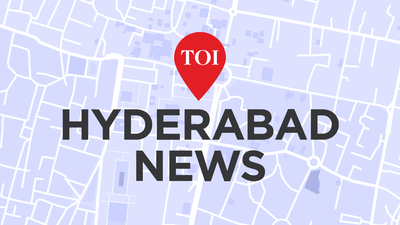Irreversible damage to Kaleshwaram barrages: NDSA report | Hyderabad News

Hyderabad: Stating that the damage to the raft and piers of block 7 of the Medigadda barrage of the Kaleshwaram Lift Irrigation Scheme (KLIS) are irreversible, National Dam Safety Authority (NDSA) has recommended that the Telangana govt should not use the (block 7) structures for the operation of gates again. They may be safely disposed of or stabilised, in situ, based on the experience of the executing agency.
NSDA also said while carrying out the works, the adjacent blocks should not be damaged in any manner.
On Annaram and Sundilla, which have also developed structural issues, the NDSA said the two barrages have also experienced distress conditions and damages “rendering them unserviceable” and were also vulnerable. “All three barrages need to be thoroughly and entirely investigated from all angles,” NDSA added.
The NDSA committee, led by J Chandrashekhar Iyer and member secretary Amitabh Meena, along with other members, investigated sinking of some piers of block 7 of the Medigadda barrage and problems in the Annaram and Sundilla barrages. They submitted a 365-page report to the Union ministry of jal shakti in Dec last, which has been sent to the Telangana govt for further action.
Three piers were completely damaged, while some others were partially affected in block 7 of Medigadda in Oct 2023. The NDSA submitted its preliminary report last year, and now the final report was submitted. The Justice PC Ghose’s one-man commission was also waiting for the report.
Regarding the reasons for the sinking of piers in Medigadda and other barrages, NDSA, in its report, stated that the sand piping phenomenon, cavity formation underneath the raft, construction defects, design deficiencies, structural distress, and other downstream damages experienced by block 7 rendered it unserviceable. These issues could manifest in other blocks of the Medigadda barrage as well. The committee noted that the geophysical investigation report reveals that cavities underneath the raft had formed not only in block 7 but also in other blocks.
“The damages to block 7 have resulted in the barrage becoming non-functional for diverting water. Even the bridge that spanned over it has become non-functional. Since this block is not the first or last block of the barrage, the movement of the gantry crane over the whole barrage width has also been stopped. Due to such sinking, not only has block 7 suffered irreversible damages, but its safe removal would also pose challenges as it may cause damage to adjacent blocks,” the report stated.
The committee mentioned that the flexible protection works of the barrage, such as CC blocks and the launching apron in the downstream, have either settled, been damaged, dislodged, or washed far away at many locations along the length of the barrage.
“The rehabilitation design should comprehensively assess the health and safety of the entire Medigadda barrage and the two other barrages. The design should consider and address all the deficiencies, whether they be geotechnical, hydrological, hydraulic, or structural aspects. Geotechnical investigations should be carried out as required for the entire barrage,” the report stated.
Regarding the two other barrages, NDSA said, “The two upstream barrages, Annaram and Sundilla, which have similar deficiencies in design and construction, have also experienced distress conditions and damages rendering them unserviceable, and are also vulnerable. All three barrages need to be thoroughly and entirely investigated from all angles,” NDSA said.
















